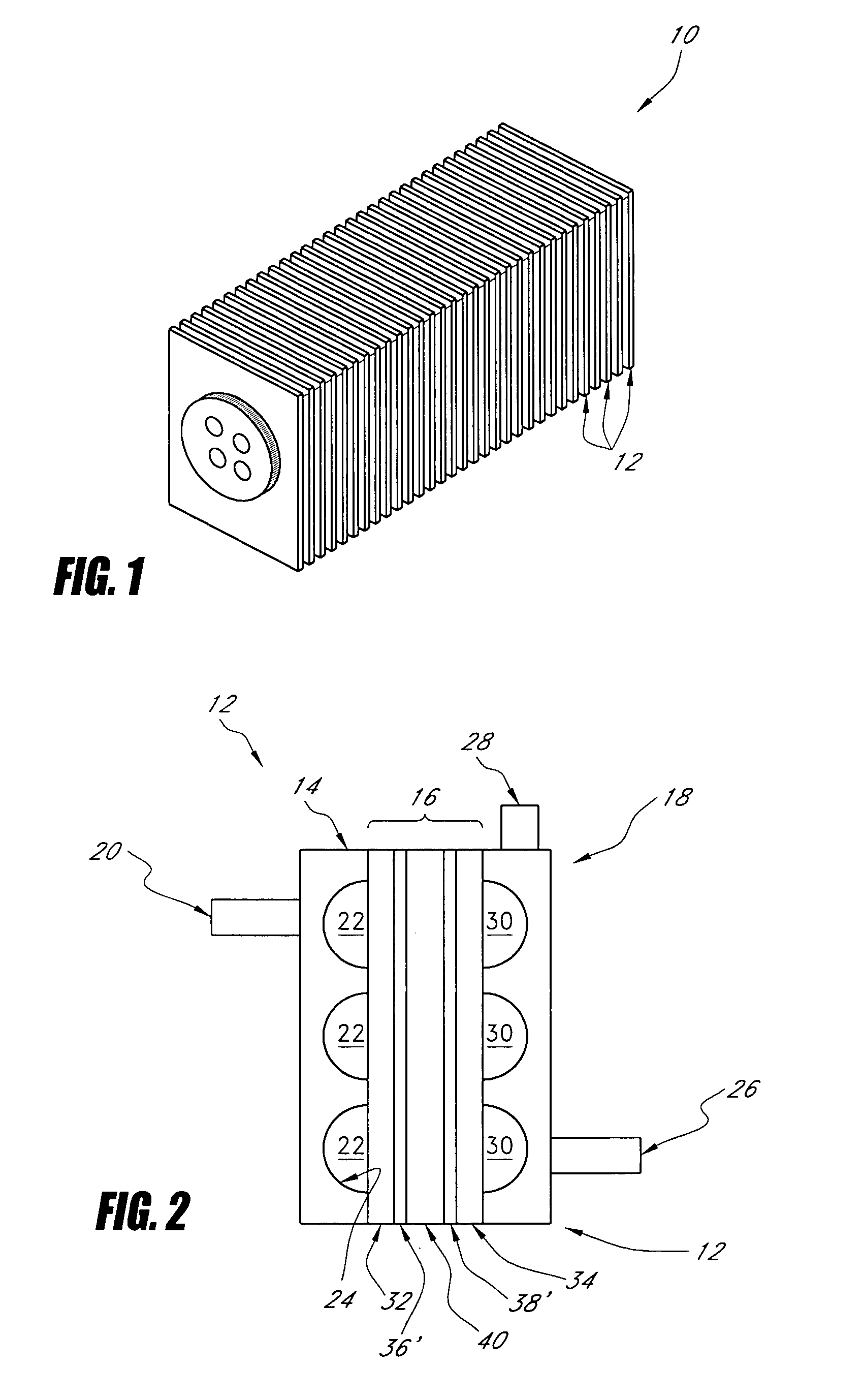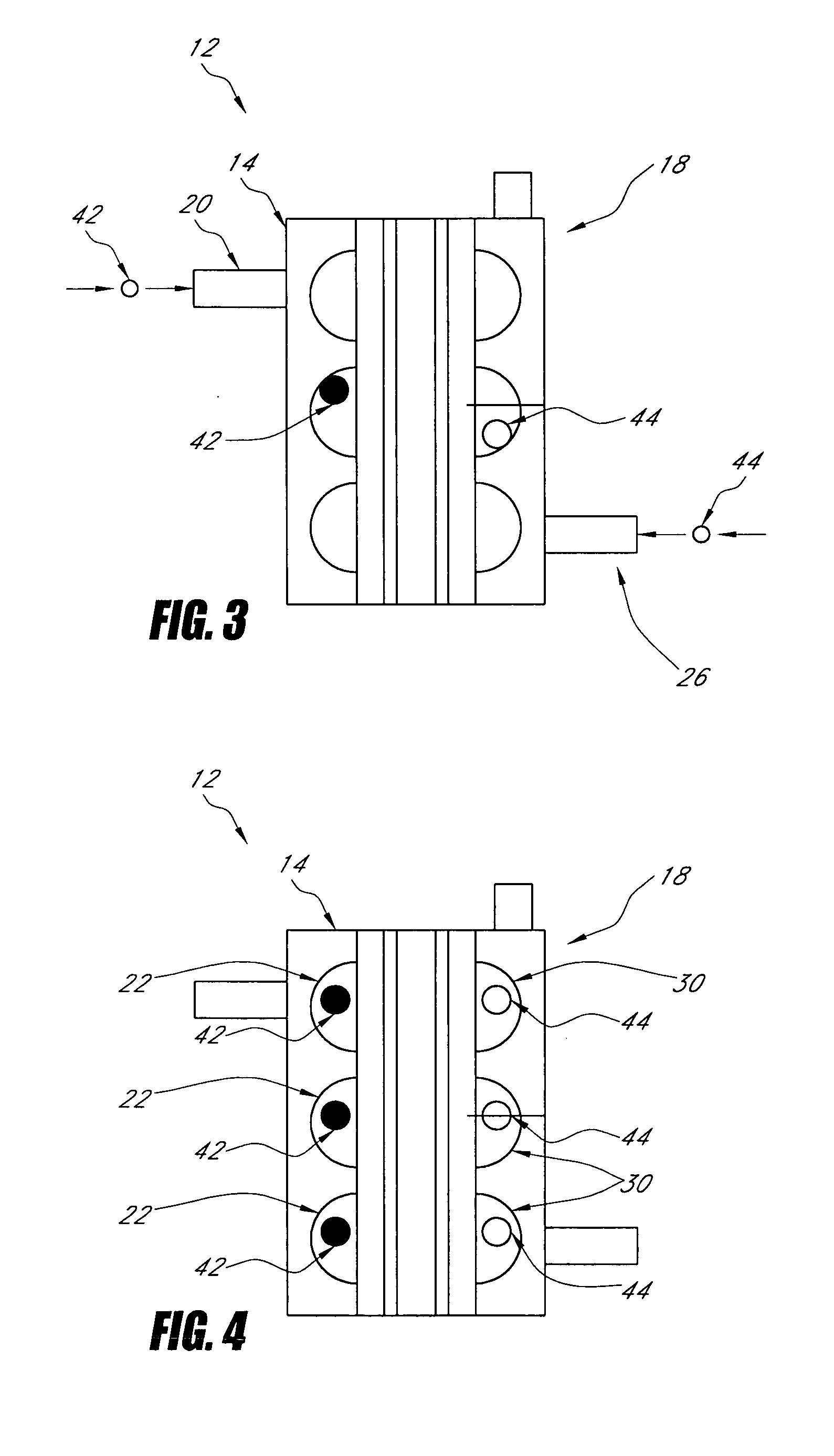Nano-material catalyst device
a catalyst device and nanomaterial technology, applied in the field of catalysts for electrochemical reactions, can solve the problems of high cost of platinum, achieve the effect of reducing the cost of such catalyst devices, and reducing the cost of fuel cell systems, etc., and achieving the same effective total surface energy
- Summary
- Abstract
- Description
- Claims
- Application Information
AI Technical Summary
Benefits of technology
Problems solved by technology
Method used
Image
Examples
example 1
Preparation of an Electrode
[0108]About 0.15 grams of nickel powder (15 nm) and 1.35 grams of micron-nickel powder (0.5 micron) were blended in a vial. The resulting mixture was poured into a ¾″ die containing a ¾″ circle of expanded nickel metal. The die was then volumetrically compressed to 1500 psi and held at this pressure for 30 seconds. The resulting electrode was removed from the die and placed in a furnace at 500° C. for 1 hour.
example 2
Electrode Performance
[0109]Cathodes were tested using a half-cell apparatus to independently test the electrode activity for hydrogen and oxygen generation. Electrolyte was a 33% KOH solution against a zinc-wire reference electrode. FIG. 8 shows a set of voltammograms for oxygen generation and a set for hydrogen generation. The most inefficient electrodes, shown as lines 300 are the lowest and highest lines on the hydrogen and oxygen curves, respectively. Electrodes made completely of micron-sized nickel also perform poor, shown on lines 302. However, with the addition of metal nanoparticles into the mixture, performance increases dramatically. Lines 304-307 illustrate this enhanced performance.
[0110]Referring to FIGS. 18 and 19, a comparison is shown between the efficiency and electrical performance of the described electrodes versus typical electrodes. Efficiency is defined as the amount of energy required to make hydrogen versus the energy inherent to the molecule. FIG. 18 shows ...
PUM
| Property | Measurement | Unit |
|---|---|---|
| diameter | aaaaa | aaaaa |
| diameter | aaaaa | aaaaa |
| diameter | aaaaa | aaaaa |
Abstract
Description
Claims
Application Information
 Login to View More
Login to View More - R&D
- Intellectual Property
- Life Sciences
- Materials
- Tech Scout
- Unparalleled Data Quality
- Higher Quality Content
- 60% Fewer Hallucinations
Browse by: Latest US Patents, China's latest patents, Technical Efficacy Thesaurus, Application Domain, Technology Topic, Popular Technical Reports.
© 2025 PatSnap. All rights reserved.Legal|Privacy policy|Modern Slavery Act Transparency Statement|Sitemap|About US| Contact US: help@patsnap.com



